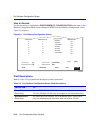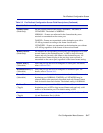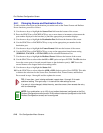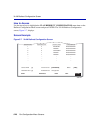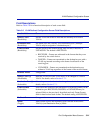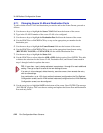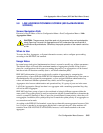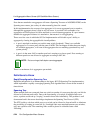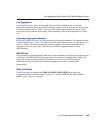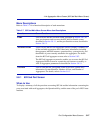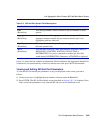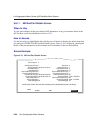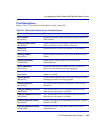
Link Aggregation Menu Screen (802.3ad Main Menu Screen)
5-24 Port Configuration Menu Screens
Ports that are attached to an aggregator will enter a Spanning Tree state of AGGREGATING on the
Spanning tree screens, just as they do when manually placed in a trunk.
In this implementation, the concept of an aggregator is for a non-aggregated port to attach to,
although this aggregator doesn’t exist in any real sense. A port that is not a member of an
aggregation will be displayed in LM as attached to a non-existent aggregation. If a port instance
matches the aggregator instance it is attached to, that means it is not aggregating.
There are a few cases in which the 802.3ad implementation will disable a port’s ability to
aggregate by clearing the aggregable bit ActorOperState:
• A port is attached to another port on this same switch (loopback). There is no available
aggregator for 2 or more ports with the same LAGID. This can happen if either there are simply
no available aggregators, or if none of the aggregators have a matching operational key and
system priority.
• A port is in the same LAG as another port but is running at a slower speed. Ports running at
different speeds are not allowed to aggregate according to 802.3ad.
There is a maximum of six aggregators per module.
Definitions to Know
Rapid Reconfiguration Spanning Tree
Rapid Reconfiguration is an enhancement to the legacy 802.1D Spanning Tree implementation,
which implements a rapidly converging Spanning Tree algorithm that is event-driven instead of
timer-driven.
Spanning Tree
When multiple links are connected from one switch to another, it is necessary that only one link be
allowed to switch network traffic. Due to the functionality of a switch, if multiple links were
active, a packet would end up “looping” around in those links indefinitely. This problem is well
documented and is the reason that bridges implement the Spanning Tree Protocol (STP).
The STP is able to calculate which ports on a switch can be allowed to forward traffic to eliminate
the possibility of looping in a network. So, if multiple links were attached between two switches,
only one would be used. The remaining links would be placed in a disabled state called
“Blocking.”
NOTE: Ports running at half-duplex cannot aggregate.



